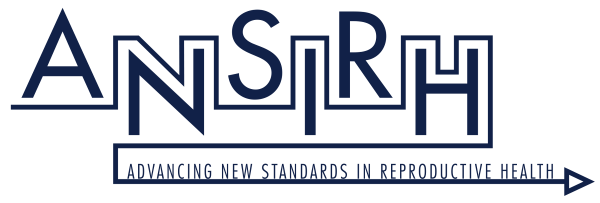Before the Google Ads Abortion Access study, there had been no studies that surveyed pregnant people when considering an abortion to investigate the barriers they face. The study was initially designed to understand how state-level abortion policies impact an individual’s ability to obtain a wanted abortion and to understand the barriers and facilitators to a wanted abortion. Individuals were recruited by Google online advertisements that were posted based on their search terms. Additionally, the study sought to determine whether Google Ads are an appropriate and effective tool for researchers to recruit and retain people considering abortion.
Research Questions
Study Design
Researchers recruited participants at the point of their online Google search of specific abortion related terms. The advertisements used to recruit respondents were displayed when individuals searched keywords related to abortion, abortion clinics, or medication abortion. Individuals who clicked on the link were redirected to a landing page with information on the study. Those interested were then redirected to a survey determining eligibility.
Those eligible for the study completed a 10-minute baseline survey, which included questions on sociodemographic characteristics, gestation, pregnancy history, their relationship with the person they became pregnant with, abortion stigma and decision certainty regarding their abortion decision.
Respondents were then invited to complete the follow-up survey 4 weeks later. They were first asked if they were still pregnant and given a 15-minute survey tailored to their pregnancy status. The follow-up survey asked about barriers they faced accessing abortion, decision certainty, whether they had visited a crisis pregnancy center, and if they had tried to self-manage an abortion.
Implications
State Abortion Policies and Medicaid: The primary paper explored state-level abortion policies and found a lack of Medicaid coverage to be associated with prolonged abortion seeking. With abortion being a time-sensitive procedure, such financial barriers are considerable hinderances to abortion access.
Abortion Waiting Periods and Decision Certainty: The research team also found that restrictive laws enforcing waiting periods or two-visit requirements are not associated with increased decision-certainty. With such restrictions delaying access to time-sensitive care, an evidence-based approach to abortion care should consider that most people are certain about their desired pregnancy outcome at the time that they present for care.
Crisis Pregnancy Centers (CPCs) and Pregnancy Outcomes: Researchers found that in order to ensure pregnant people have access to unbiased information, health care providers and practitioners should seek innovative ways to reach those seeking information on their pregnancy options, including online outreach methods. Additionally, it should be confirmed that pregnant people who visit CPCs are having their needs met, are being provided with unbiased resources, and that they are not being misled on the care available to them. Download our infographic summarizing these results.
Barriers to Abortion Care and Attempted Self-managed Abortion: The latest paper explores prevalence of attempted self-managed abortion, and how it demonstrates the need for innovative methods to reduce barriers to abortion care and expand equitable access, including increasing the number and types of clinicians who can provide abortion, allowing pharmacy access to abortion pills, and approving telehealth models of abortion care. By decreasing strict FDA regulations on abortion pills (mifepristone) and repealing the ban on telemedicine abortions effective in 19 states, barriers to abortion care can be reduced and pregnant people can be granted more control over abortion options. Download our infographic summarizing these results.
Acknowledgements
The Google Ads Abortion Access Study would not have been possible without the research team and their collaborators, which include Alice F. Cartwright, Katherine Tumlinson, Iris J Jovel, Kevin D McCuaig, Ashley A McCook, and Ariana H Bennett.
